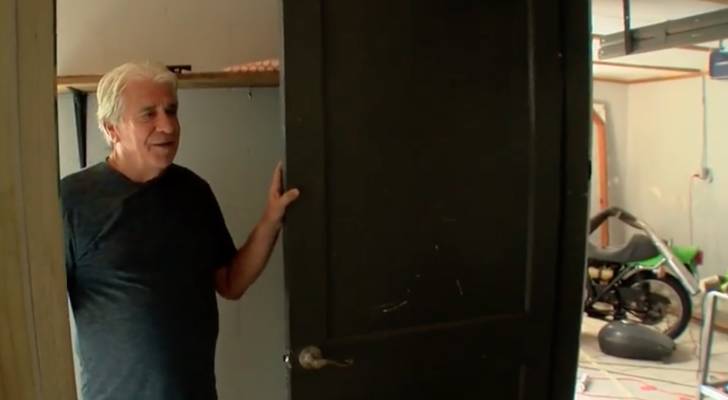
Glenn Martin is fixing up his home to sell, but he’s not happy about it. He’s worried all his work will be destroyed before he finds a buyer — and his fear is not unfounded.
Martin lives in Punta Gorda, Florida. He’s doing repairs because his home was badly damaged in Hurricane Helene last September. It’s not the first time.
Punta Gorda is located along the Gulf Coast in Charlotte County. The community has been pummeled by hurricanes in the past decade, including Irma (2017); Ian (2022); Milton and Helene (2024)
Don’t miss
- I’m 49 years old and have nothing saved for retirement — what should I do? Don’t panic. Here are 5 of the easiest ways you can catch up (and fast)
- Gain potential quarterly income through this $1B private real estate fund — even if you’re not a millionaire. Here’s how to get started with as little as $10
- You’re probably already overpaying for this 1 ‘must-have’ expense — and thanks to Trump’s tariffs, your monthly bill could soar even higher. Here’s how 2 minutes can protect your wallet right now
Martin is scared it will happen again.
“Every piece of furniture is downstairs, ruined. My refrigerator floated up,” Martin told Gulf Coast News.
"One thing I’m afraid of right now is working on this house and spending a bunch of money and getting another one of these things next fall. Another storm."
But Martin faces a dilemma. He’s racing to offload his property because the hurricanes — the source of his problems — are making it much tougher to sell homes in the area. So while he doesn’t want to pour money into a house that may be damaged again, he feels he has to in order to make the home more appealing to buyers.
Perfect storm: Hurricanes, insurance, inflation and mortgage rates
Martin’s right. Zillow data shows that Punta Gorda’s median home lists for $367,585, down 10% year-over-year. Around 82.8% of homes now sell under list price.
“The market is definitely weak right now,” Changzhou Kenzie, the head of economics for Redfin, said. “You are seeing inventory accumulate. Prices are soft. If you are a potential buyer in Florida, you could probably negotiate a pretty good price for yourself.”
Read more: Want an extra $1,300,000 when you retire? Dave Ramsey says this 7-step plan ‘works every single time’ to kill debt, get rich in America — and that ‘anyone’ can do it
Gulf Coast News also reported that there’s around a seven-month supply of homes on the Gulf Coast and that, in addition to turnkey homes on the market, there are at least 1,000 fixer-uppers for sale — many with lingering damage from repeated storms.
“Anytime you get hit back to back, it’s going to be a challenge,” warned Cindy Marsh-Tichy, a realtor who sells homes in Punta Gorda and nearby areas.
The repeated storms have created shortages of contractors and materials.
That’s one of the reasons Martin is willing to spend tens of thousands to get the work done so potential buyers won’t be put off by the prospect of costly fixes.
But it’s not just the time and costs involved in repairs that may be scaring homeowners away. It’s surging insurance costs as well.
Dozens of insurers have pulled out of the state due to the repeated hurricane damage, leaving a limited number of insurers to provide coverage.
The result? Florida is the most expensive state in the country when it comes to homeowners’ insurance — with an average homeowners’ premium of $12,000 a year, according to research by Insurify.
Plus, while property values have fallen, a home priced at more than $360,000 is likely too expensive for many families.
“If we want more families, we need more affordable, starter homes,” Marsh-Tichy said.
For those who can afford a down payment, mortgage rates remain stubbornly high, adding to the monthly costs for the 41% of Americans who say inflation is their biggest financial problem.
How to deal with storm-prone areas
Unfortunately, as extreme weather events increase, homeowners can expect more storms going forward — and prospective buyers need to consider the risks before closing on a house.
If you live in an area with a high storm risk, consider taking protective measures, such as elevating living space above the level of typical storm surges, investing in hurricane or tornado straps and installing flood barriers.
And if you’re planning to buy a property, check the cost of home insurance and the history of storms around or at a home before signing a deal. You can also check FEMA flood maps to assist in this risk assessment work.
That way you may avoid facing Martin’s dilemma with a home that needs serious repairs just as its value falls.
What to read next
- Millions of Americans now sit on a stunning $35 trillion in home equity — here’s 1 new way to invest in responsible US homeowners while targeting a 14%-17% IRR
- Robert Kiyosaki warns of a ‘Greater Depression’ coming to the US — with millions of Americans going poor. But he says these 2 ‘easy-money’ assets will bring in ‘great wealth’. How to get in now
- Here are 5 ‘must have’ items that Americans (almost) always overpay for — and very quickly regret. How many are hurting you?
This article provides information only and should not be construed as advice. It is provided without warranty of any kind.


